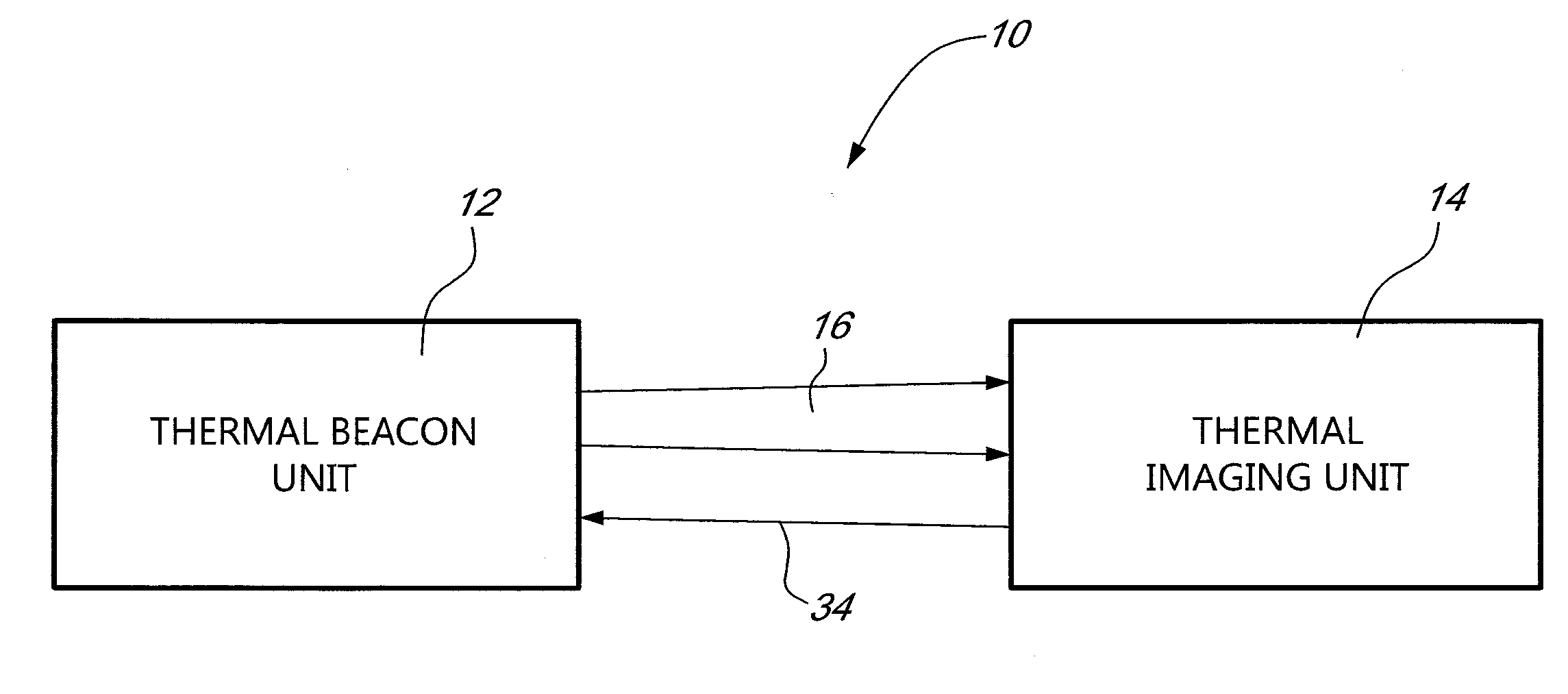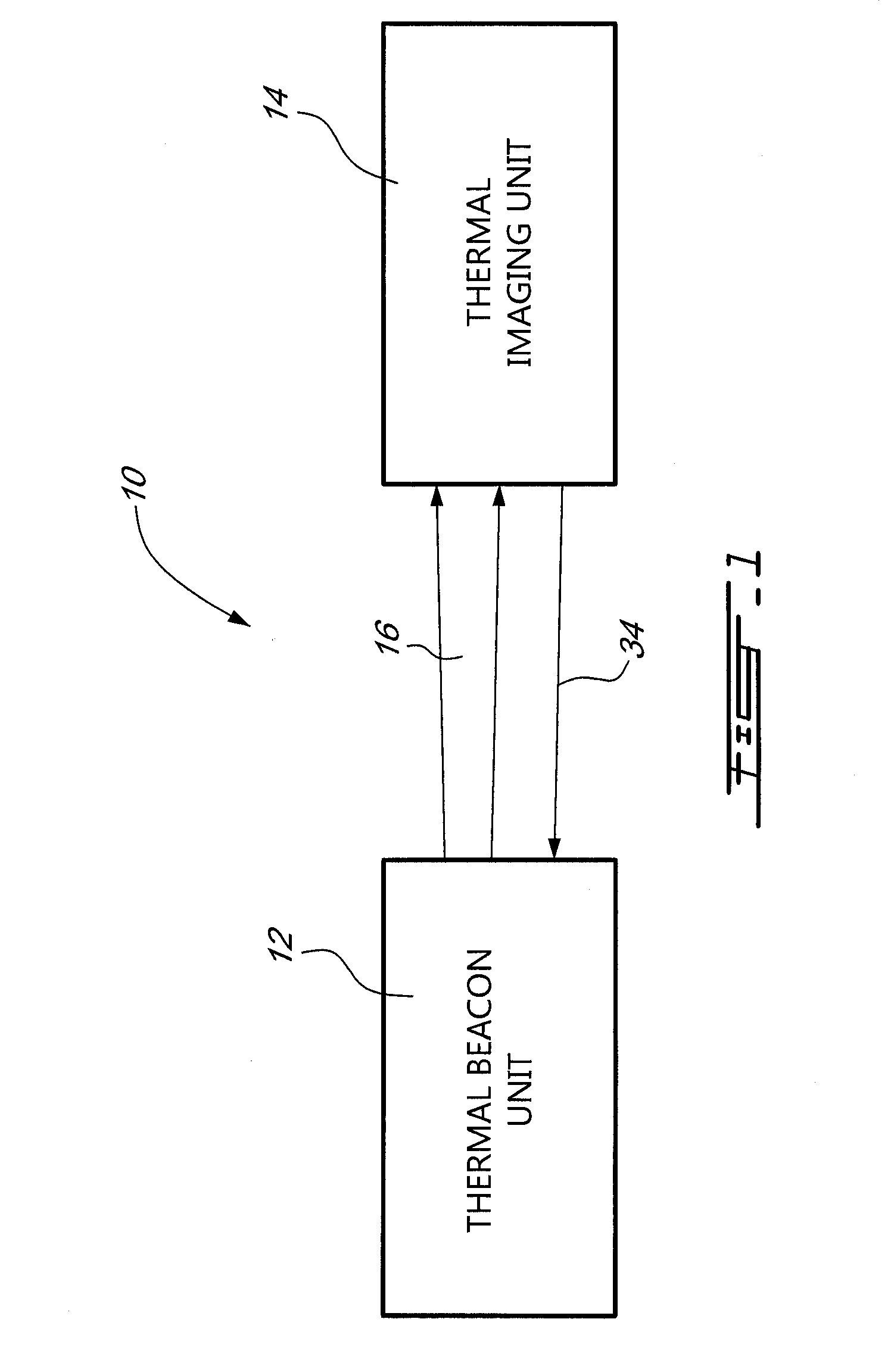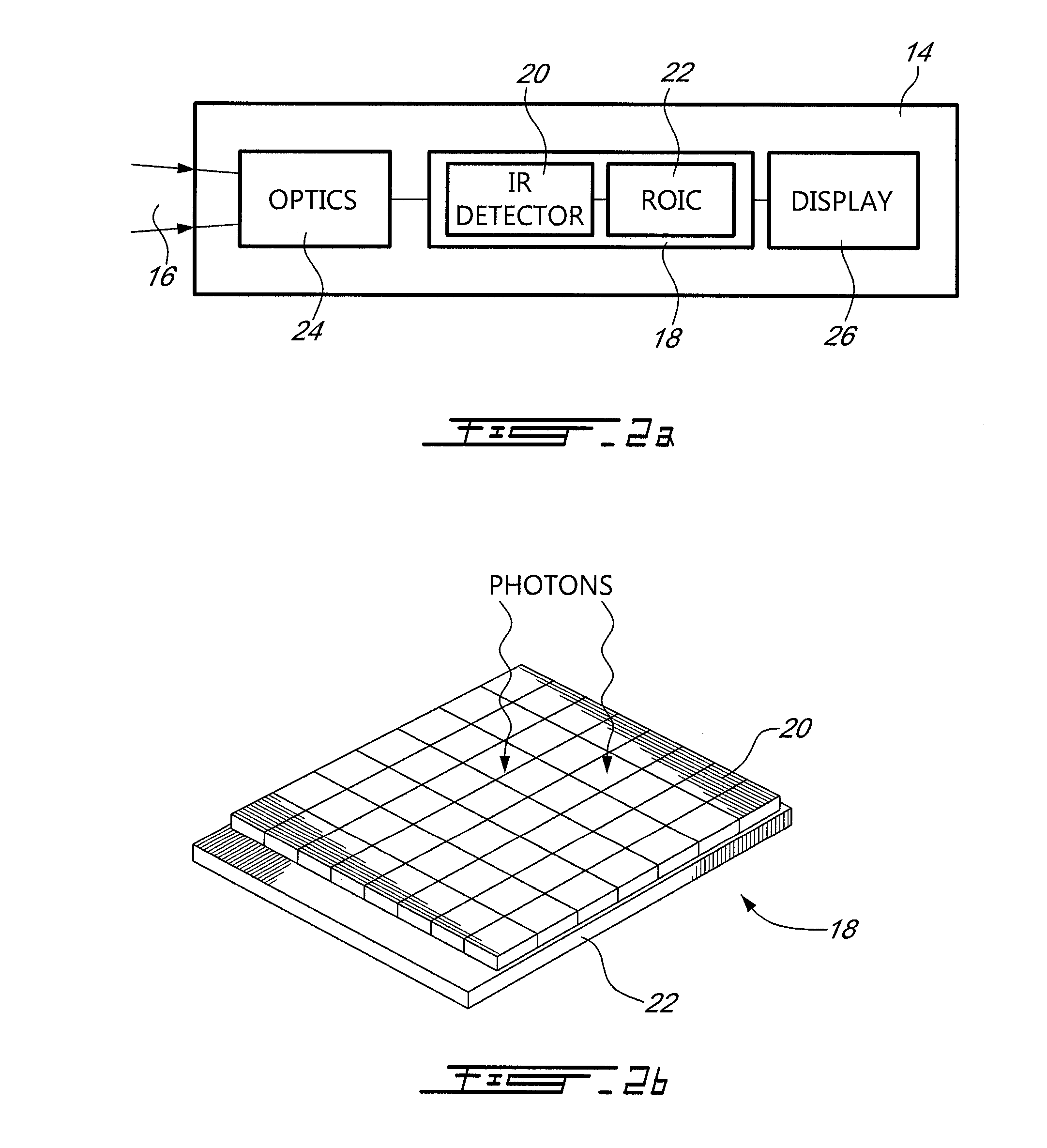Identification system and method using highly collimated source of electromagnetic radiation
a technology of electromagnetic radiation and identification system, which is applied in the direction of optical radiation measurement, instruments, and using reradiation, can solve the problems of not being able to identify and detect the bulk of the distinguishable characteristics of the scene, and becoming increasingly difficult, so as to achieve sufficient strength, sufficient strength, and sufficient strength
- Summary
- Abstract
- Description
- Claims
- Application Information
AI Technical Summary
Benefits of technology
Problems solved by technology
Method used
Image
Examples
Embodiment Construction
[0015]Referring now to FIG. 1, a thermal beacon identification system, generally referred to using the reference numeral 10, will now be described. The system 10 comprises a thermal beacon unit 12 and a thermal imaging unit 14 positioned at a distance thereto. In operation, the thermal beacon unit 12 emits radiation 16 projected in the direction of the thermal imaging unit 14 for identification of the thermal beacon unit 12 and associated carrier (soldier, vehicle, or the like). When detected by the thermal imaging unit 14, an image of the radiation 16 is displayed as a spot on the thermal imaging unit 14, thus eliciting the attention of a viewer observing a scene through it. The system 10 therefore allows for easy visual identification of specific locations, people, items, targets, and the like through the thermal imaging unit 14.
[0016]Referring now to FIGS. 2a and 2b in addition to FIG. 1, the thermal imaging unit 14 illustratively comprises an array of sensing elements 18, also r...
PUM
 Login to View More
Login to View More Abstract
Description
Claims
Application Information
 Login to View More
Login to View More - R&D
- Intellectual Property
- Life Sciences
- Materials
- Tech Scout
- Unparalleled Data Quality
- Higher Quality Content
- 60% Fewer Hallucinations
Browse by: Latest US Patents, China's latest patents, Technical Efficacy Thesaurus, Application Domain, Technology Topic, Popular Technical Reports.
© 2025 PatSnap. All rights reserved.Legal|Privacy policy|Modern Slavery Act Transparency Statement|Sitemap|About US| Contact US: help@patsnap.com



